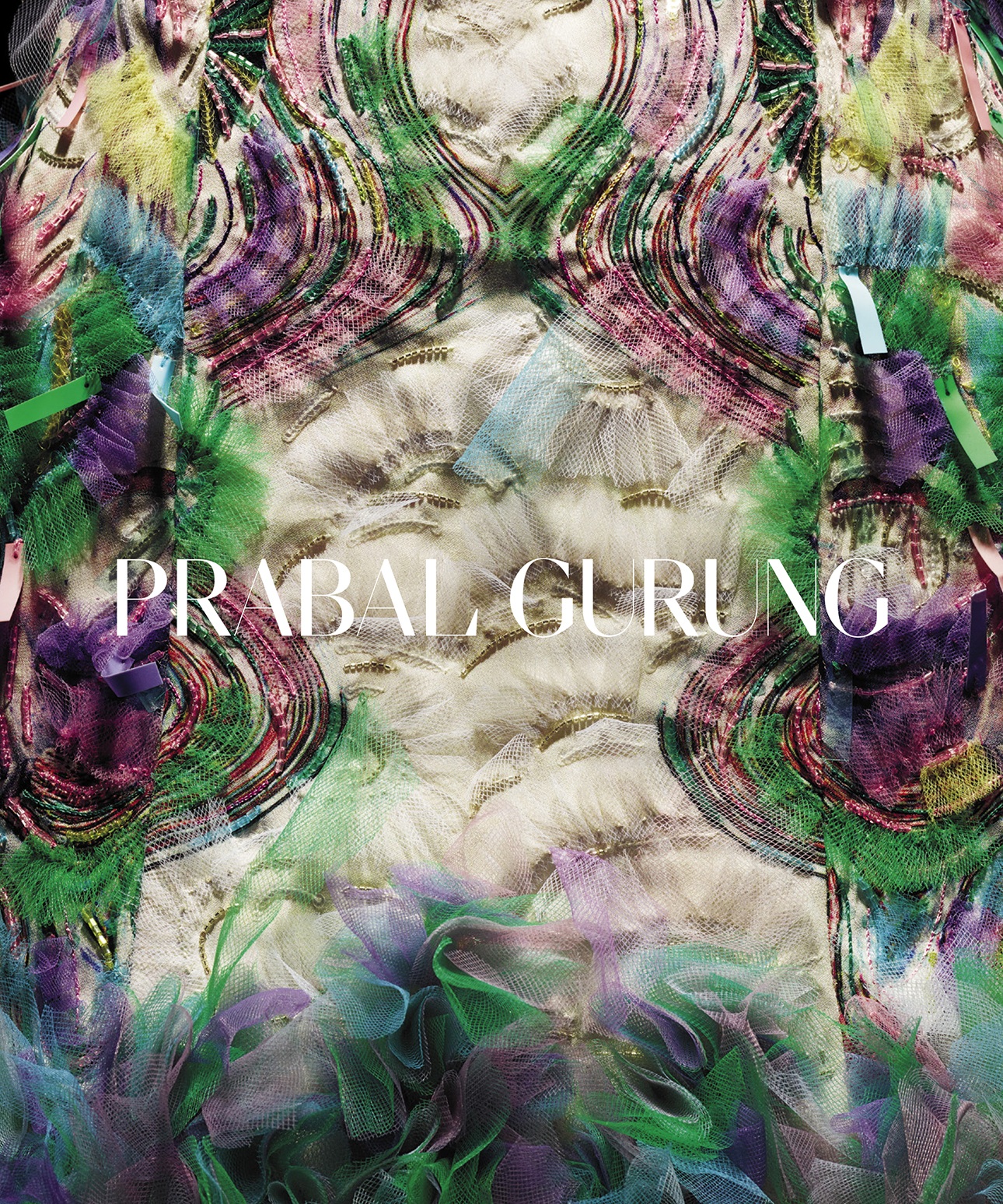
Foreword
by Sarah Jessica Parker
Almost everybody has had a moment in their life when they were getting ready for a special occasion, a secret
rendezvous, an assignation, a wedding, an important job interview, simply an evening out, or celebrating a friend.
In those moments, those solitary moments, you are often working toward a destinationyour dress. Some might
consider the dress their armor, others a more modest shell. For some it really is a protective covering, necessary
for cultural or religious reasons, or tells the story of the person you are aiming to be. Pieces of cloth are married
by design, effort, and inspiration that very personally communicate who you are and what you want to convey to
others about the significance of the occasion. Or perhaps, more importantly, what you feel. Its the last thing you
put on only when ready, prepared. Its the period at the end of the sentence.
Imagining this magical moment is at the heart of how Prabal Gurung designs. A woman is in her bathroom, or in
front of a mirror, putting on her makeup or deciding on the ensemble in completion and the Prabal Gurung dress
is hanging there. It waits for you to make it live. To speak without words.
As a young boy in Nepal, Prabal watched his mother go through this routinewashing her face, doing her
eyebrows, accentuating her eyes with color, then her lips, and finally, transforming herself with a sari. She might
have put her lipstick on first one time, then last another, but there was a ritual to it for her: things slowed down for
a second. In that moment, as he witnessed his mothers quiet process, he felt in suspended animation. And forever
as a designer recalled and called upon that quiet time, as his mothers audience.
Not everyone thinks this wayplacing women at the center of their design processand this is one of the many
reasons why I love Prabal the person and Prabal the designer. You see the women who have been influential in his
life woven into his clothingthe color of his mothers beloved Yves Saint Laurent perfume bottle reflected in a stun-
ning evening gown, Gloria Steinems powerful words embroidered on a dress, the vivid pink saris of Indias female
activist group the Gulabi Gang referenced throughout a collection. And always, the women of Nepal, wearing the
most beautiful fabric that is rich in life and color. It is alive. It is speaking. It extends itself beyond the fortunate woman
wearing the dress reaching out with its colors, intricate designs, and graceful, sweeping movement.
In a short but labor intensive and diligent ten years, Prabal has accomplished what so many young and emerging
designers long for. A reputation wrapped in goodwill, great affection, and endless admiration from colleagues, fel-
low designers, and his customers. Despite the cautionary tales, he launched a brand at the beginning of a recession
and went on to become much more than a designer. Prabal is a social activist. He has used his voice for good in the
worldspeaking out on diversity, womens rights, and body positivityand embedded meaning into each of his
pieces. He has created not just any brand, but a luxury brand with a soul.
Prabals clothes, very simply, help you feel good about yourself, and they also bring joy. They give you power and
confidence, so that when you reach your destinationyour dressyou can step into it, go out the door, and feel
like you. That is the power of fashion, that is the power of style.
And Prabals great achievement.

Introduction
by Prabal Gurung
Sometimes my existence feels like a dream: surreal, poetic, a figment of my greatest fantasies. I was just a boy in
Nepal, a misfit who was constantly bullied and harassed, who somehow managed to escape from that tormented
existence to an alternate realityperhaps for sheer survivalby my sketches. Dresses, shoes, jewelry, ball gowns,
and beautiful faces all came to life on the pages of my notebook in the back of my all-boys school classroom. All
in an effort to create a more kind and beautiful reality, to find my own special place under the sun.
Despite the tribulations that came with being different from the other boys, my childhood memories of Nepal
and India are mostly idyllic. The raw, vivid landscapes, traditional art and architecture, rich history and culture,
and, above all, the heroic single mother who raised me, accepted me, and encouraged me to embrace what makes
me unique have all inspired me to see the world through a vibrant and colorful lens.
I grew up watching melodramatic Bollywood films and old Hollywood movies and reading classic English novels.
I was always captivated by the grandeur and theatrics so fearlessly integrated into the stories. These stories
analyzed, dissected, and savored with my siblings over countless cups of tea from the early misty dawn until the
skies turned blush at duskenabled me to dream the most impossible dreams, to feel that it was all within reach.
My restless existence as a child eventually took me on a dizzying journey from Singapore to Nepal and India,
with a few later stops in Australia and England. I gained invaluable experience, perspective, and connections, but
none of those felt like quite the right place to establish my career and fulfill my grandest hopes and dreams.
When I finally came to America to study at Parsons, I knew no one and I knew nothing but my own yearning to















